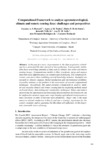Please use this identifier to cite or link to this item:
http://www.alice.cnptia.embrapa.br/alice/handle/doc/256494Full metadata record
| DC Field | Value | Language |
|---|---|---|
| dc.contributor.author | ROMANI, L. A. S. | pt_BR |
| dc.contributor.author | TRAINA, A. J. M. | pt_BR |
| dc.contributor.author | SOUSA, E. P. M. de | pt_BR |
| dc.contributor.author | ZULLO JÚNIOR, J. | pt_BR |
| dc.contributor.author | AVILA, A. M. H. | pt_BR |
| dc.contributor.author | RODRIGUES JR. J. F. | pt_BR |
| dc.contributor.author | TRAINA JÚNIOR. C. | pt_BR |
| dc.date.accessioned | 2011-04-09T17:37:24Z | - |
| dc.date.available | 2011-04-09T17:37:24Z | - |
| dc.date.created | 2009-08-06 | pt_BR |
| dc.date.issued | 2009 | pt_BR |
| dc.identifier.citation | In: CONGRESSO DA SOCIEDADE BRASILEIRA DE COMPUTAÇÃO, 29., 2009, Bento Gonçalves. Anais... Rio Grande do SUL: Instituto de Informática UFRGS. | pt_BR |
| dc.identifier.uri | http://www.alice.cnptia.embrapa.br/alice/handle/doc/256494 | pt_BR |
| dc.description | In the past few years, improvements in the data acquisition technology have decreased the time interval of data gathering. Consequently, institutions have stored huge amounts of data such as climate time series and remote sensing images. Computational models to filter, transform, merge and analyze data from many different areas are complex and challenging. The complexity increases even more when combining several knowledge domains. Examples are research in climatic changes, biofuel production and environmental problems. A possible solution to the problem is the association of several computational techniques. Accordingly, this paper presents a framework to analyze, monitor and visualize climate and remote sensing data by employing methods based on fractal theory, data mining and visualization techniques. Initial experiments showed that the information and knowledge discovered from this framework can be employed to monitor sugar cane crops, helping agricultural entrepreneurs to make decisions in order to become more productive. Sugar cane is the main source to ethanol production in Brazil, and has a strategic importance for the country economy and to guarantee the Brazilian self-sufficiency in this important, renewable source of energy. | pt_BR |
| dc.language.iso | eng | eng |
| dc.rights | openAccess | eng |
| dc.subject | Dados agrometeorológicos | pt_BR |
| dc.subject | Dados de sensoriamento remoto | pt_BR |
| dc.subject | Dados climáticos | pt_BR |
| dc.subject | Teoria dos fractais | pt_BR |
| dc.subject | Mineração de dados | pt_BR |
| dc.subject | Técnicas de visualização | pt_BR |
| dc.subject | Dados massivos | pt_BR |
| dc.subject | Séries temporais | pt_BR |
| dc.subject | Cana-de-açúcar | pt_BR |
| dc.subject | Data mining | pt_BR |
| dc.title | Computational framework to analyze agrometeorological, climate and remote sensing data: challenges and perspectives. | pt_BR |
| dc.type | Artigo em anais e proceedings | pt_BR |
| dc.date.updated | 2020-01-31T11:11:11Z | pt_BR |
| dc.subject.thesagro | Agricultura | pt_BR |
| dc.subject.nalthesaurus | Remote sensing | pt_BR |
| dc.subject.nalthesaurus | Agriculture | pt_BR |
| dc.subject.nalthesaurus | Sugarcane | eng |
| dc.description.notes | CSBC 2009. | pt_BR |
| dc.format.extent2 | p. 323-337. | pt_BR |
| riaa.ainfo.id | 256494 | pt_BR |
| riaa.ainfo.lastupdate | 2020-01-31 -02:00:00 | pt_BR |
| dc.contributor.institution | LUCIANA ALVIM SANTOS ROMANI, CNPTIA; AGMA J. M. TRAINA, Ciência da Computação/USP São Carlos; ELAINE P. M. DE SOUSA, Ciência da Computação/USP São Carlos; JURANDIR ZULLO JÚNIOR, CEPAGRI/ UNICAMP; ANA M. H. AVILA, CEPAGRI/UNICAMP; JOSE FERNANDO RODRIGUES JR., UFSCAR; CAETANO TRAINA JÚNIOR, Ciência da Computação/USP São Carlos. | pt_BR |
| Appears in Collections: | Artigo em anais de congresso (CNPTIA)  | |
Files in This Item:
| File | Description | Size | Format | |
|---|---|---|---|---|
| ROMANI2009.pdf | 721,34 kB | Adobe PDF |  View/Open |









